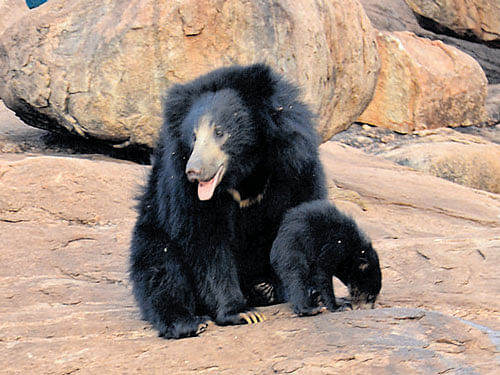
A team of conservationists from the animal rescue nonprofit, Wildlife SOS, is researching the distribution and ecological behaviour of sloth bears in Karnataka to determine their population.
This is first-ever study in Karnataka, which is said to have the second highest population of sloth bears in the country, after Gujarat. But the exact number of the nocturnal animal has never been ascertained in the State which is considered an ideal home for sloth bears.
Conservationists are covering Tumakuru, Ramanagar, Arsikere, Savandurga and Ballari which are considered terrains of sloth bears, Swaminathan S, senior wildlife biologist at Wildlife SOS, told Deccan Herald.
Tumakuru district is said to have the highest population of sloth bears in Karnataka, followed by Shivamogga. This needs to be ascertained and the study will help. The two sloth bear sanctuaries, Daroji and Bodekotte, are also being studied, he added.
Tumakuru also reports the highest number of conflicts between humans and sloth bears, Swaminathan said. It’s not because of the sloth bear population but because the forest area is shrinking and cattle grazing terrory increasing. Besides, more and more people are using the forests for minor forest produce and firewood. In last one year, seven cases of man-animal conflict were reported in Tumakuru and five in Shivamogga.
The four-member team, along with forest department officials, is studying the distribution of sloth bears and their habitats. It is also studying the quantity and quality of food available for sloth bears in forest patches and outside and why they venture out.
The researchers and officials are interacting with local residents to understand their problems and explain to them the need to conserve sloth bears. The aim is to make them aware of their surroundings. A similar initiative is being take up at tourist destinations, too.
According to forest experts, territory poses the biggest challenge in estimating the population of sloth bears and leopards. Since these animals live on the fringe of forests, a well-organised methodology needs to be adopted.
Principal Chief Conservator of Forests (Wildlife) Ravi Ralph acknowledged that no census of sloth bears had been conducted but said the department was working towards it.
DH News Service